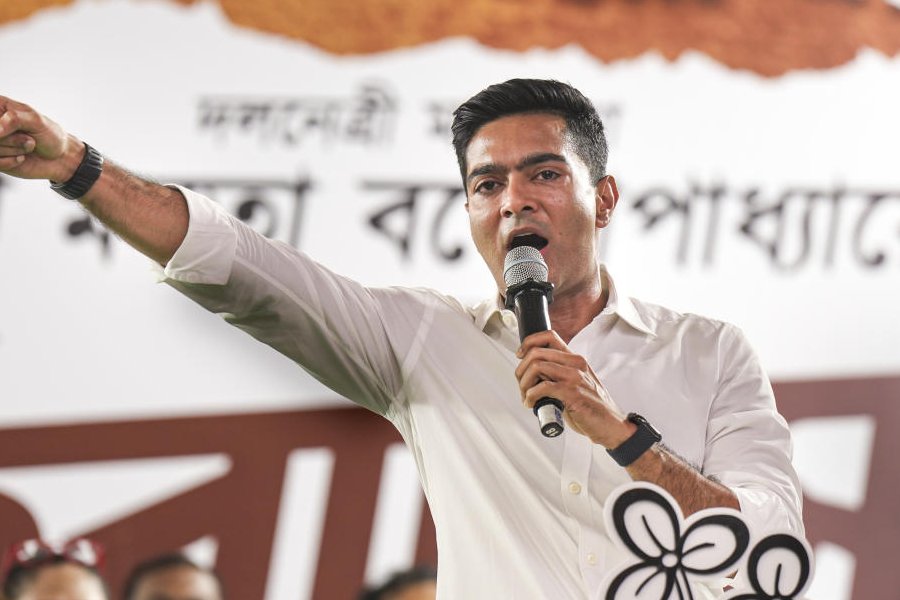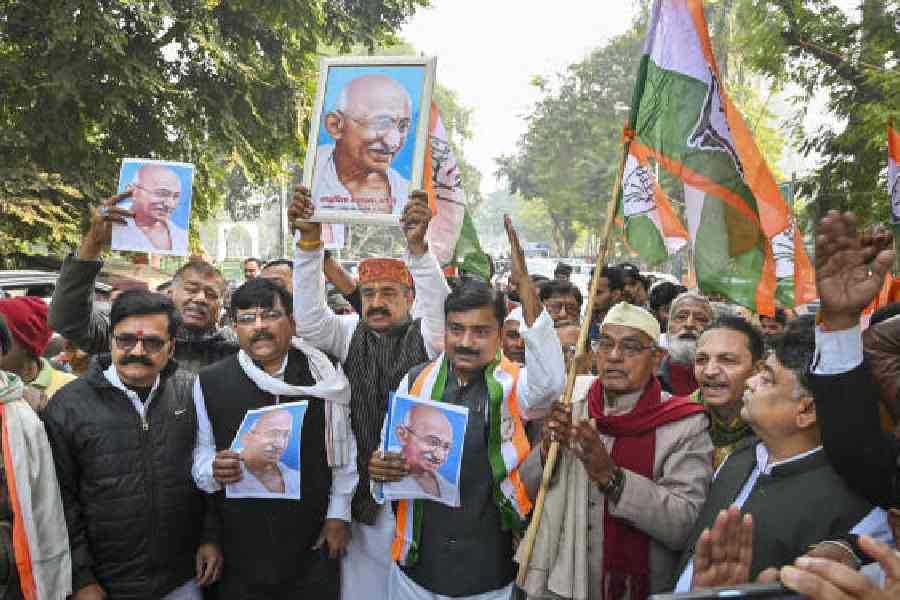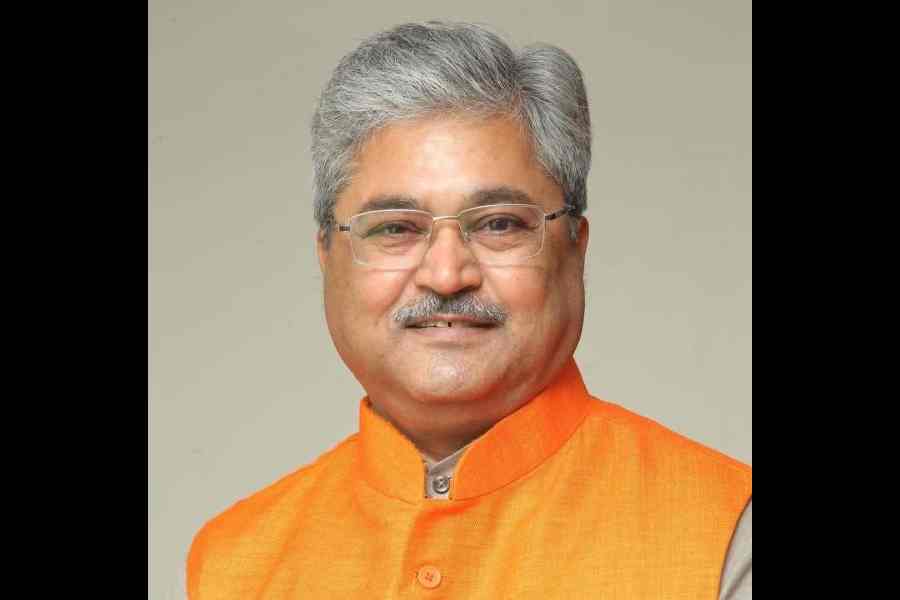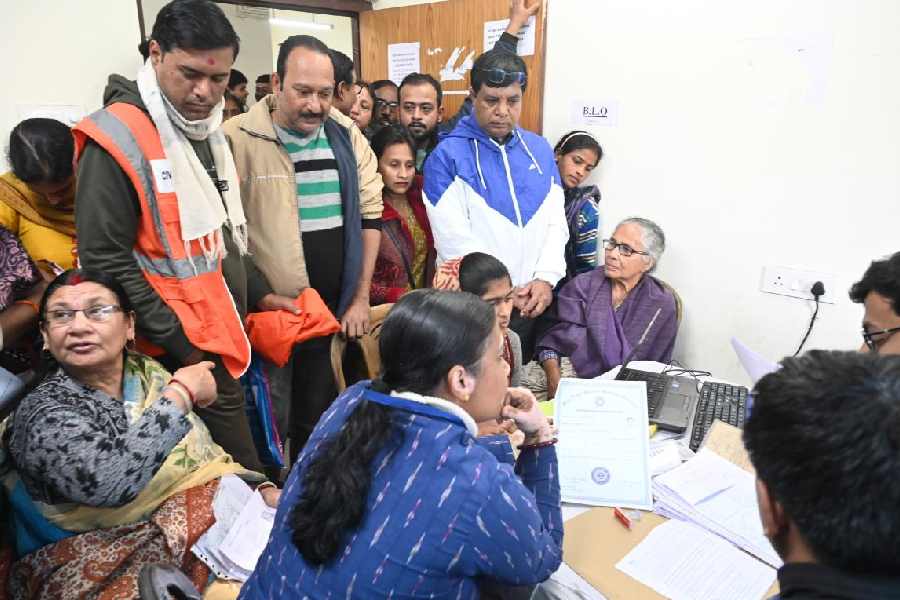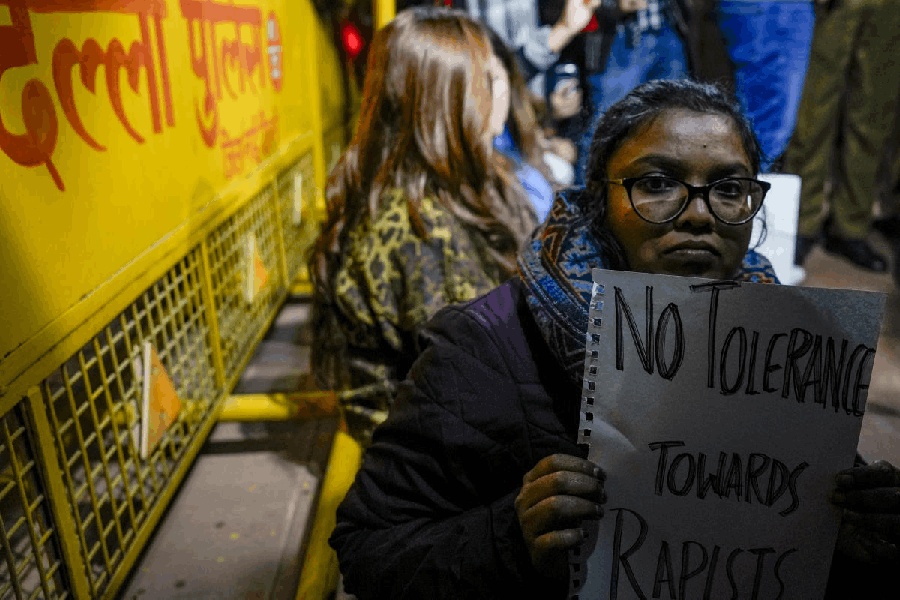 |
Director: Nitish Roy
Cast: Victor Banerjee, Ashish Vidyarthi, Paran Bandopadhyay, Kanchan Mallick, Dedipya Ganguly, Saswata Chatterjee, Kharaj Mukherjee, Shankar Chakraborty, Tinnu Anand
Just before the premiere of Gosain Baganer Bhoot at Priya cinema on Thursday, writer Shirshendu Mukhopadhyay said he’d forgotten much of what he had written 32 years back and would watch the film as “someone else’s story”. That should’ve been warning enough!
Art director Nitish Roy’s Gosain Baganer Bhoot is not Shirshendu’s Gosain Baganer Bhoot, even if the storyline, much of the dialogue and all the characters are the same. The film is a story of disappointments and delights.
Young Burun (played smartly by Dedipya Ganguly) finds his world bleak and meaningless after scoring 13 in maths. Punished by his father and shunned by his siblings, an indignant Burun walks out of home after being taunted by even the pet bird. He heads straight for the forbidding Gosain Bagan, where he encounters Nidhiram, the ghost. Next follows what is easily the most spectacular sequence in this very visual book — to impress and scare Burun, Nidhiram takes off his head and screws it back on, elongates his arm to pick fruit from a tall tree, opens and re-attaches his limbs at will and inflates and shrinks in size. But the film reduces the grand entry of the ghost to a mishmash of special effects.
Try as Nidhiram may, he can’t scare Burun. Because “mejaj kharap thakle amar bhoy-dor thake na (when I’m upset, I don’t have any fear)”, the boy explains to the 200-year-old ghost. The film fails to make this crucial point.
But how can Nidhiram go back to his other-worldly community if he can’t even scare a chit of a boy? Thus begins his attempts to curry favour with Burun. He solves Burun’s math problems at lightning speed, completes all his punishment chores and turns the boy into a master athlete.
While Kanchan Mallick does a good job as Nidhiram, he’s nothing like the benign ghost an entire generation of Bengalis has grown up on. Kanchan’s make-up, which took two-and-a-half-hours to put on each day, is impressive, particularly since it was done by local make-up artist Subir Manna. Sadly that can’t be said of the other ghosts — most of them are an eyesore.
Another sad miss in the film is the sports day heats in Burun’s school. In the book, thanks to Nidhiram, he completes the 100m race in eight seconds flat and records a long jump of 22ft at least!
Tinnu Anand, who plays Justice Dhiren, had joked that his is a “blink-and-you-miss-it” role. That should’ve actually been said of Locket Chatterjee, who plays Burun’s mother and has hardly three lines to mouth. Paran Bandopadhyay as the math- possessed Karali Master is the best thing about the film, and not just because his character is true to the original.
But the biggest puzzle is Burun’s grandfather Ram Kabiraj. This principled, fearless man of Shirshendu’s story, who scoffs at allopathy and thinks nothing of treading into Gosain Bagan to hunt for herbs and roots, is transformed into a bumbling, vague old man with an affected walk. Victor Banerjee plays this new Ram Kabiraj with aplomb but altering this stellar character belies logic.
Habu Gunda, played by Ashish Vidyarthi, has been given far more screen space than in the book, but that was natural. Habu, with his pet tiger and magical mantras that make slaves out of ghosts, offers much cinematic possibilities. But why are his minions clad in tiger suits that look like they’ve been stitched out of fake velvet?
Also, while it’s unfair to expect the humour of Shirshendu’s subtle prose to be translated onto celluloid, it’s time our moviemakers realised that loud is not equal to funny.
Having said that, Gosain Baganer Bhoot does offer some delights, foremost among which is Chandrabindoo’s music, particularly Ek je chhilo Burun, sung brilliantly by Pratul Mukhopadhyay, and Anke tero. The other plus is the special effects. The scene with the animated hippo and the picturisation of Anke tero take Bengali films to the other side of the digital divide, finally!
Last word? Take the kids for the film, then read them the story. They’ll love both; you’ll thank the filmmaker for getting you to revisit this gem of a book.


